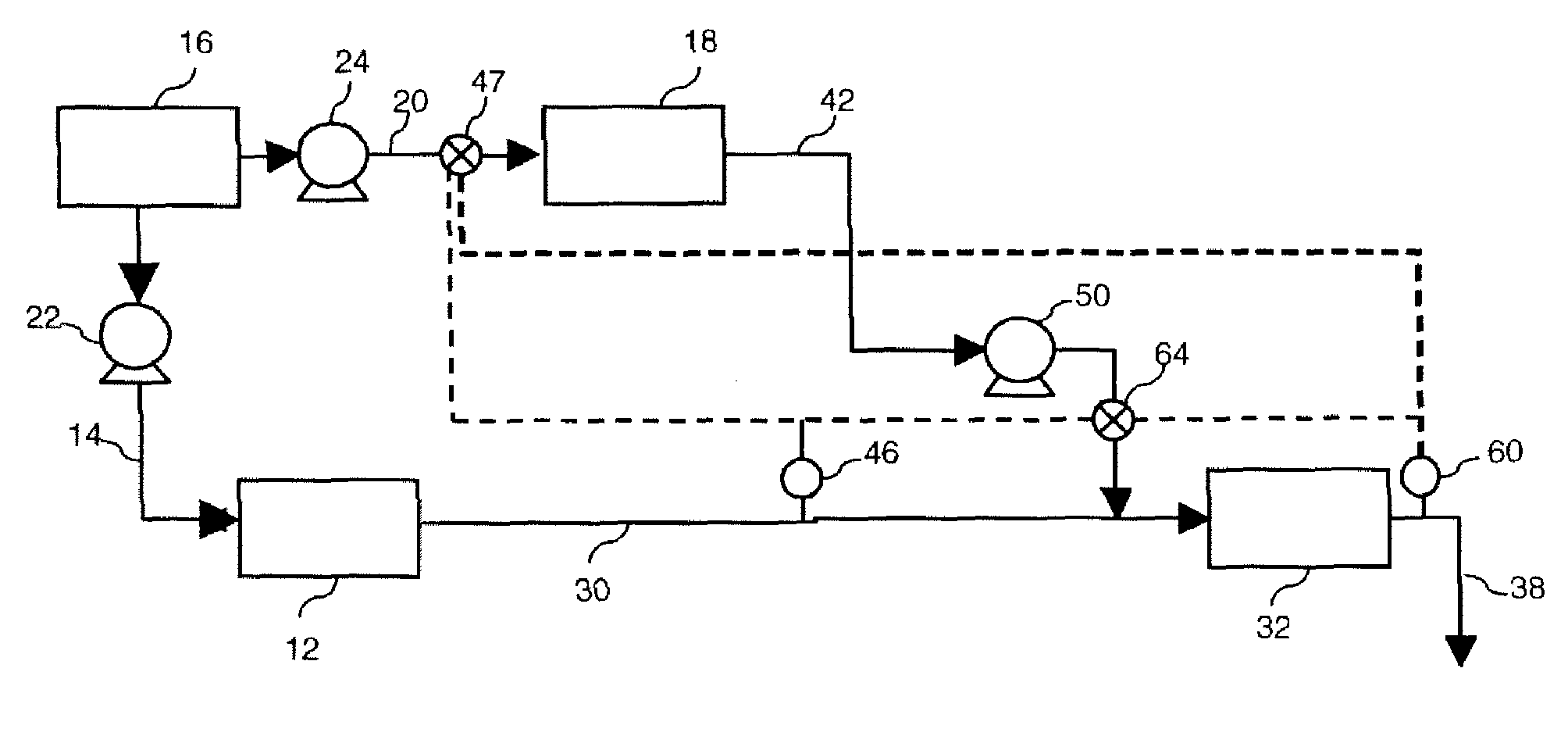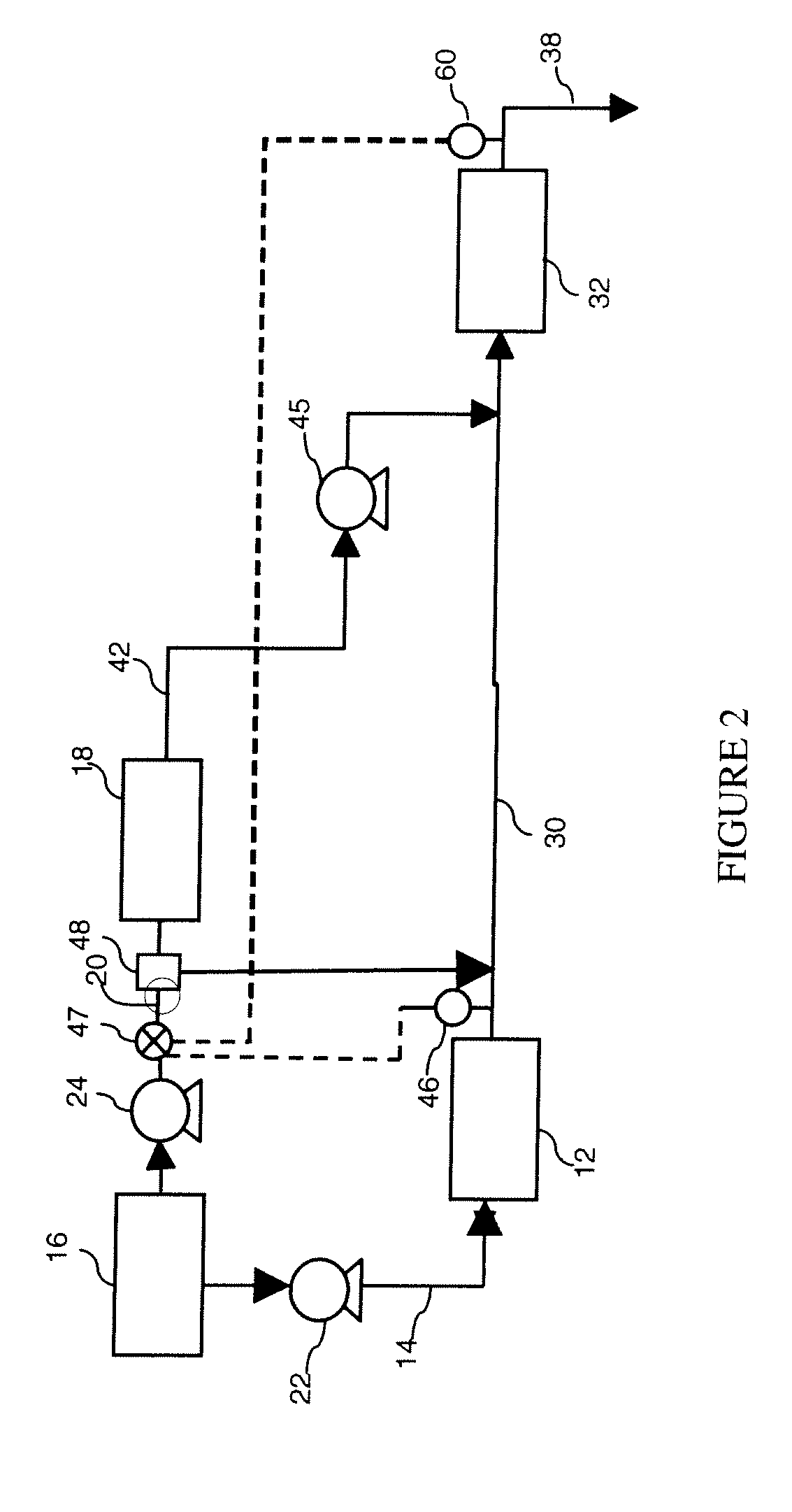OPTIMIZED REDUCTION OF NOx EMISSIONS FROM DIESEL ENGINES
a technology for nox emissions and diesel engines, applied in the field of nox emission reduction of diesel engines, can solve the problems of reducing the supply infrastructure of ammonia, requiring a source of ammonia, and limiting the application of ammonia-scr to large stationary applications, so as to improve the emission control and reduce the emissions of nox
- Summary
- Abstract
- Description
- Claims
- Application Information
AI Technical Summary
Benefits of technology
Problems solved by technology
Method used
Image
Examples
example 1
[0057]Exhaust treatment of a diesel engine was performed at different temperatures using 100% diesel, a diesel / ethanol blend containing 90% diesel and 10% ethanol (90 / 10 blend) and a diesel / ethanol blend containing 50% diesel and 50% ethanol (50 / 50). The diesel and diesel / ethanol blends were used to reduce NOx in a temperature-controlled emission treatment unit. The results are displayed in FIG. 7. The selective reduction catalyst was a silver based catalyst on washcoated alumina, supported on a monolith. A simulated exhaust stream was used that contained NO, CO, H2O, O2 and N2. When injected into the exhaust stream for NOx SCR, the 90 / 10 blend showed at least a 30% NOx reduction to N2 at an exhaust stream temperature of 430° C., but below a 15% NOx reduction to N2 at an exhaust stream temperature of 375° C. When the alcohol-rich 50 / 50 blend was injected into an exhaust stream having a low temperature of 375° C., NOx reduction to N2 increased to above 40%. Thus the alcohol-rich fuel...
PUM
 Login to View More
Login to View More Abstract
Description
Claims
Application Information
 Login to View More
Login to View More - R&D
- Intellectual Property
- Life Sciences
- Materials
- Tech Scout
- Unparalleled Data Quality
- Higher Quality Content
- 60% Fewer Hallucinations
Browse by: Latest US Patents, China's latest patents, Technical Efficacy Thesaurus, Application Domain, Technology Topic, Popular Technical Reports.
© 2025 PatSnap. All rights reserved.Legal|Privacy policy|Modern Slavery Act Transparency Statement|Sitemap|About US| Contact US: help@patsnap.com



